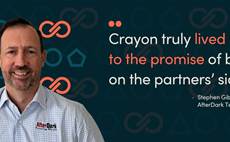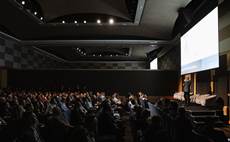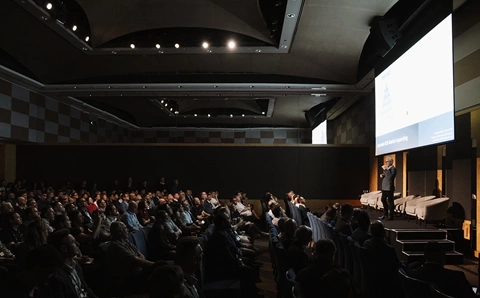As we stand on the brink of a new Hybrid IT revolution underpinned by AI, customers require comprehensive assistance in building and deploying strategies, rather than treating AI deployment as a mere project or service.
As AI revolutionises Hybrid IT's alignment of on-premises and cloud-based infrastructure, it is imperative to address the critical enablers that will drive this transformation. Customers are increasingly seeking support in design thinking, understanding profitability and revenue, security and governance, and total cost of ownership, including ongoing management costs.
Up to eight in ten ANZ organisations will turn to tech partners, most likely their incumbents, to help with AI idea generation, implementation and management, according to TRA research commissioned by Schneider Electric in 2024.
Partners play a pivotal role in this ecosystem, aligning with the AI value chain that spans from energy production, data centres and networking to data supply, domain-specific AI solutions and apps, and end-user services. Focusing on both infrastructure and energy efficiency, ANZ organisations and their partners can collectively pave the way for a sustainable and innovative future.
Market Insights: The AI Opportunity in ANZ
The AI market in Australia and New Zealand is poised for significant growth across various industries, according to the TRA ANZ AI Market Map Analysis. Key findings include:
- Mining, Oil and Gas: This sector is expected to see 2-3% of IT spending directed towards AI in 2025, with 75% of companies indicating broad investment in AI. Key use cases include predictive maintenance, real-time monitoring and AI-augmented exploration.
- Retail: With an estimated 12-13% of IT spending on AI, the retail sector is focusing on personalised product recommendations, demand forecasting and AI-powered customer service.
- Electricity: AI spending is projected to be 2-3% of IT budgets, with significant investments in smart grid management, predictive maintenance and energy optimisation.
- Healthcare: AI adoption is growing, with 4-5% of IT spending expected to be allocated to AI. Key applications include personalised medicine, telemedicine enhancements and predictive analytics for patient outcomes.
These insights highlight the diverse opportunities for AI adoption and the critical role of infrastructure and energy efficiency in supporting this growth.
Infrastructure and Energy Efficiency: The Cornerstones of Hybrid IT
In the rapidly evolving landscape of Hybrid IT, infrastructure and energy efficiency are paramount. The integration of advanced technologies such as edge computing, AI and IoT is reshaping how businesses operate. These technologies enable real-time data processing, reduce latency and enhance operational efficiency, making them indispensable for modern enterprises.
Schneider Electric, a global leader in energy management and automation, recognises the importance of these elements. The company's commitment to sustainability and innovation is evident in its approach to Hybrid IT. By leveraging cutting-edge digital tools and technologies, Schneider Electric is not only optimising energy usage but also ensuring that infrastructure is robust and scalable.
The vast supply chain of the Hybrid IT ecosystem necessitates the involvement of various partners, making it crucial to develop an ecosystem that can support the entire value chain. AI projects often do not come in as "AI projects" but may present themselves as network refreshes, data cleansing opportunities or other key projects. The strength of the ecosystem in identifying these AI opportunities and facilitating or passing the baton will be critical.
The Role of Edge Computing in Distributed Architectures
Edge computing is a critical component of the Hybrid IT ecosystem. As architectures become increasingly distributed, the ability to process data closer to the source is essential. This reduces the reliance on centralised data centres, minimises latency and enhances the overall efficiency of IT operations.
The insights from the TRA ANZ AI Market Map Analysis underscore the significance of edge computing in various industries. For instance, in the manufacturing sector, edge computing enables real-time monitoring and optimisation of production processes. In the healthcare industry, it facilitates remote patient monitoring and telemedicine services, ensuring timely and efficient delivery of care.
Schneider Electric's integrated ecosystem of partners, including consultants, vendors, managed service providers (MSPs) and alliances, plays a pivotal role in this journey. With a network of more than 150,000 partners globally, Schneider Electric is well-positioned to drive innovation and sustainability across industries.
Modernisation, Security and Sustainability
A successful Hybrid IT transformation requires a collaborative approach, with the TRA report highlighting the importance of partnerships in enabling AI-driven solutions.
For example, in the energy sector, AI can optimise grid management and predict maintenance needs, to reduce downtime and improve reliability. In the retail industry, AI-driven analytics can enhance customer experiences and streamline supply chain operations.
Schneider Electric's commitment to innovation is reflected in its use of best-in-class digital tools and technologies. These tools not only bring partners together but also facilitate the development of a cohesive and efficient ecosystem. By integrating AI, IoT and edge computing, Schneider Electric is creating a framework that supports seamless collaboration and drives continuous improvement.
When it comes to security, Schneider Electric’s hybrid IT infrastructure combines edge and cloud capabilities to present a more secure model for processing data, reducing transmission time and enhancing data security. This approach ensures that sensitive information is handled with the utmost care, addressing concerns about data sovereignty and compliance, especially in sectors like healthcare and government-linked industries.
The TRA report provides numerous examples of how these technologies are being applied across different sectors to support sustainability. In the mining industry, AI and IoT are used to monitor equipment health and optimise resource extraction. In the water management sector, digital twins and predictive analytics enhance operational efficiency and sustainability.
The Hybrid IT revolution presents a unique opportunity to drive sustainability and innovation. By focusing on infrastructure and energy efficiency, and leveraging the power of edge computing and AI, it is possible to create a future that is both sustainable and technologically advanced. Schneider Electric, with its integrated ecosystem of partners and cutting-edge digital tools, is at the forefront of this transformation.
Discover more innovations and resources by visiting the Schneider Electric Partner Hub today.

.jpg&w=480&c=0&s=1)





_(11).jpg&h=142&w=230&c=1&s=1)




.jpg&w=100&c=1&s=0)
_(8).jpg&w=100&c=1&s=0)









